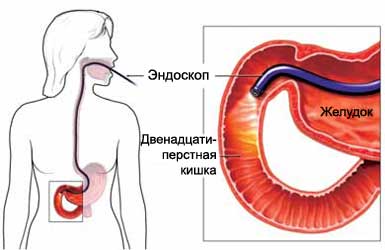Эndoskopicheskaya skleroziruyushtaya therapy – Sclerotherapy of esophageal varices
Description endoscopic sclerotherapy
Varicose veins of the esophagus – the appearance of abnormal blood vessels (Veins), which develop in the esophagus. They have a wall, and blood High pressure in them. This combination makes esophageal varices very dangerous, because they can burst and cause life-threatening bleeding.
Injection in the varicose veins of the esophagus is a procedure, which is designed to either prevent future bleeding or stop the current. During the procedure, the drug is administered directly to or near the varicose veins. When injected into a vein, medication causes blood clots, blocking the veins and prevent bleeding. With the introduction of near Vienna, the area next to it swells and shrinks the vein, preventing bleeding.
This procedure is also known as sclerotherapy.
Reasons for endoscopic sclerotherapy
Esophageal varices can be life-threatening. Sclerotherapy of esophageal varices is a procedure, that can reduce the likelihood of bleeding. This procedure is also used, to stop the bleeding from esophageal varices.
Possible complications of sclerotherapy of esophageal varices
Complications are rare, but no procedure does not guarantee the absence of risk. If you plan to sclerotherapy, you need to know about possible complications, which may include:
- Painful swallowing;
- Esophagostenosis;
- Bleeding;
- Damage to the esophagus;
- Infection.
Factors, that may increase the risk of complications:
- Alcoholism;
- Coagulation failure;
- Active bleeding;
- Advanced age;
- Diseases of the heart or lungs.
How is sclerotherapy of esophageal varices?
Preparation for the procedure
- Do not eat from 8 to 12 hours before the procedure;
- If you have diabetes, Discuss medication with your doctor;
- It is necessary to organize the return home from the hospital. You do not have to drive for 24 hours after treatment;
- Consult your doctor about the drugs taken. A week before surgery you may be asked to stop taking some medicines:
- Aspirin or other anti-inflammatory drugs;
- Blood thinners, such as clopidogrel or warfarin.
Anesthesia
- Local anesthesia – you can provide an analgesic as a rinse or spray for the throat;
- Depressant – to help you relax;
- If you have active bleeding, It may be necessary to use general anesthesia.
Procedure endoscopic sclerotherapy
To perform this procedure, you will put on his left side. In the mouth it is placed a special spreader, to keep it open. Assistant doctor will monitor your breathing and heart rate. You can be assigned to the flow of oxygen through the nose. The suction tube is used to remove saliva and other fluids from your mouth.
Lubricated for better passage through the intestine endoscope light source and a camera on the end through the mouth and throat is introduced into the esophagus. Field operations will be covered. The doctor will watch the images on the screen of the esophagus. Through the endoscope will supply air, to widen the esophagus and help the doctor better see its walls. The doctor can detect enlarged veins.

When varicose veins are found, endoscope is inserted through a special needle. The needle is used to introduce medicines into varicose veins. If necessary,, doctor can make several injections over the course of one procedure.
Through the endoscope can be inserted as special gum, by which bind varices, which will prevent future bleeding. This process is called ligation of esophageal varices.
How long will sclerotherapy of esophageal varices?
About 30-60 minutes.
Sclerotherapy of esophageal varices – Will it hurt?
During the procedure, you may feel discomfort in the throat. After the procedure, the throat will be sore for a few days. Besides, there may be frequent belching. Within a few days after the procedure can be painful to swallow.
Care after sclerotherapy of esophageal varices
After the procedure, be sure to follow your doctor's instructions, which may include:
- Do not drive for 24 hours;
- Rest the remainder of the day after surgery;
- Return to a normal diet, If the doctor otherwise specified;
- Resume medications, unless otherwise noted physician;
- If you stop taking medications before the procedure, ask your doctor, when it is safe to start taking it again.
After this procedure, you will decrease the chance of bleeding from esophageal varices. But, this does not exclude the occurrence of bleeding. It may take more than one session of sclerotherapy.
Contact your doctor after sclerotherapy of esophageal varices
After returning home, you need to see a doctor, If the following symptoms:
- Signs of infection, including fever and chills;
- Bleeding from the mouth;
- Increased pain;
- Nausea and vomiting;
- Hematemesis;
- Difficulty swallowing;
- Cough, shortness of breath or chest pain;
- Dizziness and weakness;
- Bloody or dark black stools;
- Severe abdominal pain.
